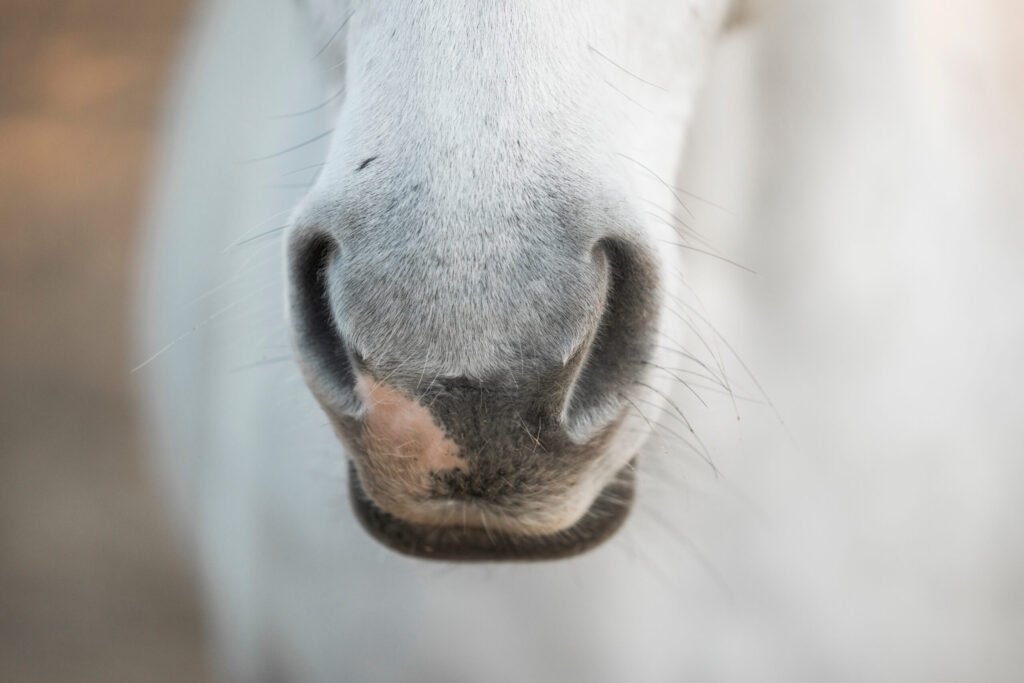Horse heaves is a chronic condition that can impact your horse’s long-term health and performance. Recognizing the symptoms and understanding treatment options is crucial for managing heaves in horses. If you notice a persistent cough or runny nose in your horse, it could be a sign of heaves, also known as recurrent airway obstruction.
Heaves is the most common lung disease in horses and can pose a threat to your horse’s well-being. While there is no cure for heaves and severe cases can be challenging to manage, early detection can help in controlling the condition and minimizing lung damage.

Here, we provide a checklist of horse heaves symptoms to help you identify when to seek veterinary attention and begin appropriate treatment. Understanding the severity of the disease, the stages of treatment, and preventive measures can aid in managing heaves effectively.
Similar to Asthma
Heaves is an allergic-based condition that affects your horse’s ability to breathe, akin to asthma in humans. Exposure to allergens like dust and pollen triggers a reaction in the lungs, leading to inflammation, thickening of airway linings, and excess mucus production. As a result, your horse struggles to breathe efficiently, especially when exposed to allergens repeatedly. Heaves is commonly observed in mature and older horses.
Consider using products to support your horse’s respiratory health, such as Heave Ho, Clear Passage, Cough Free, Air Power, and Cough Ease.
Products recommended are selected by our editorial team. We may earn a commission if you make a purchase through the provided links. For more information, click here.
Progression of the disease leads to further thickening of the airways, increased mucus production, persistent coughing, nasal discharge, and difficulty breathing. Bacterial infections can also develop in advanced cases of heaves, complicating the condition.
Horse Heaves Symptom Checklist
If your horse exhibits two or more of the following symptoms, it is advisable to consult your veterinarian for a proper diagnosis and treatment plan.
Increased Respiratory Rate
- Why it happens: Difficulty expelling air through narrowed airways leads to rapid breathing to compensate for oxygen intake.
- How to identify: Monitor your horse’s resting respiratory rate, which should typically be between 8 and 16 breaths per minute. Elevated rates indicate respiratory distress.
Increased Abdominal Breathing Effort
- Why it happens: Abdominal muscles are used to facilitate exhalation due to weakened breathing muscles.
- How to identify: Observe abnormal abdominal muscle movement during breathing and check for enlarged muscles along the belly, known as heave lines.
Coughing
- Why it happens: Irritated lung tissues trigger coughing as the horse attempts to expel mucus.
- How to identify: Heaves-related coughing occurs during exercise, feeding, and exposure to dust, with continuous coughing signaling respiratory issues.
Nasal Discharge
- Why it happens: Mucus production in the lungs results in discharge through the nostrils.
- How to identify: Look for thick, cloudy nasal discharge, indicating lung inflammation and potential bacterial presence.

Nasal discharge can be a symptom of heaves, as mucus from your horse’s lungs eventually appears in his nose. Ella/adobe.stock.com
Abnormal Lung Sounds
- Why it happens: Narrowed air passages cause wheezing as the horse struggles to breathe.
- How to identify: Abnormal lung sounds are best assessed by a veterinarian using a stethoscope. Wheezing may be audible in severe cases, especially during exercise.
Weight Loss
- Why it happens: Increased respiratory effort and decreased oxygen levels can lead to weight loss in affected horses.
- How to identify: Monitor changes in muscle and fat covering the ribs, spine, and hips to detect weight loss. Regular weight checks can help track your horse’s condition.
Treatments for Horses with Heaves
Upon confirming a diagnosis of heaves and assessing the severity of the condition, your veterinarian will recommend a treatment plan tailored to your horse’s needs. Understanding the available treatment options is essential for managing heaves effectively.
Stage 1 Treatment: Mild Heaves
Early detection allows for interventions to limit exposure to allergens and irritants, potentially halting disease progression. Key management strategies for mild heaves include:
- Turnout in open areas to reduce dust exposure.
- Ensure good ventilation in stabling areas.
- Feed at chest height to minimize dust inhalation.
- Wet hay to reduce dust particles.
- Consider pelleted forage if hay remains a concern.
- Moisten bedding and avoid dusty environments.
- Avoid cleaning stalls in the horse’s presence.
- Opt for outdoor or well-ventilated riding areas.
Stage 2 Treatment: Moderate Heaves
If mild signs persist or escalate to moderate heaves, additional treatments may be necessary, including:
- Oral corticosteroids to control airway inflammation.
- Oral bronchodilators to relax airway muscles.
- Expectorants to aid mucus clearance.
- Antibiotics for bacterial infections.
Stage 3 Treatment: Severe Heaves
In severe cases or if previous treatments are ineffective, inhaled medications may be recommended for targeted lung therapy. Inhalation therapy involves:
- Inhaled corticosteroids to reduce inflammation.
- Inhaled bronchodilators to open airways.
Horse Heaves Symptom Checklist
What’s in a Name?
Formerly known as COPD, classic heaves is now more accurately termed RAO (recurrent airway obstruction) due to the underlying disease process affecting lung tissues. IAD (inflammatory airway disease) is a milder respiratory condition distinct from heaves, characterized by tracheal inflammation and performance issues in young horses.
The connection between IAD and heaves is still unclear, but treatments and preventive measures overlap. Consult your vet for a comprehensive approach to managing respiratory issues in horses.

